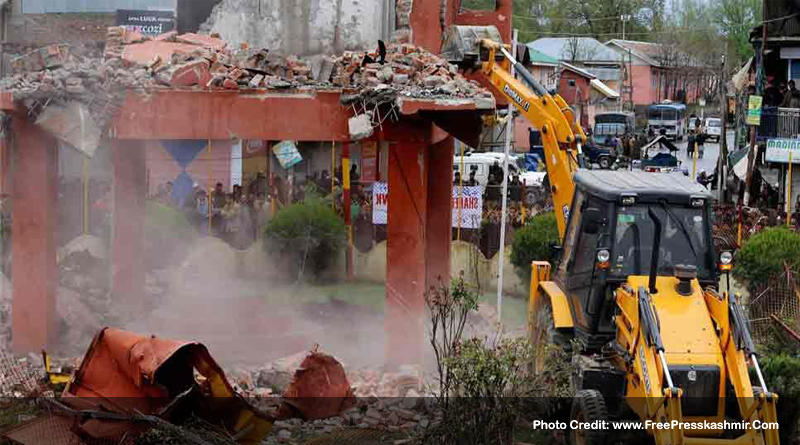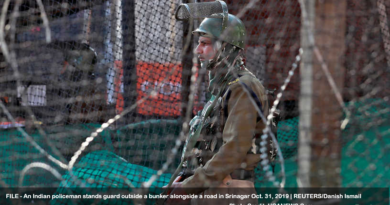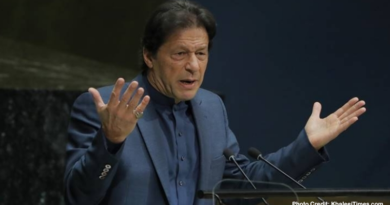Handwara Massacre: When the denied memorial resurrected from the wrecks of the watchtower
After it became one of the first countryside towns to bleed within the first week of Jagmohan’s return as a second-time governor of J&K, Handwara was denied a martyrs’ memorial. Years later, the memorial with a new identity not only got resurrected, but also went on to decimate the notoriously famous watchtower in the town.
After they were done burying 25 civilians on January 25, 1990, gunned down by the Border Security Force, the seething Handwara Township shortly came out again, defying clampdown, to crystallize the memory of their fallen.
The young and old tried to convert the roundabout park in the town square as a memorial site.
But the move was thwarted by the already stationed military, with clear ‘directions’ from the Jagmohan administration: “Don’t let those trouble-makers become bigger martyrs.”
What was supposed to become a memorial site, instead became a military bunker, the site which remote-controlled the lives of simpletons in this northern Kashmir town, for the next 26 years.
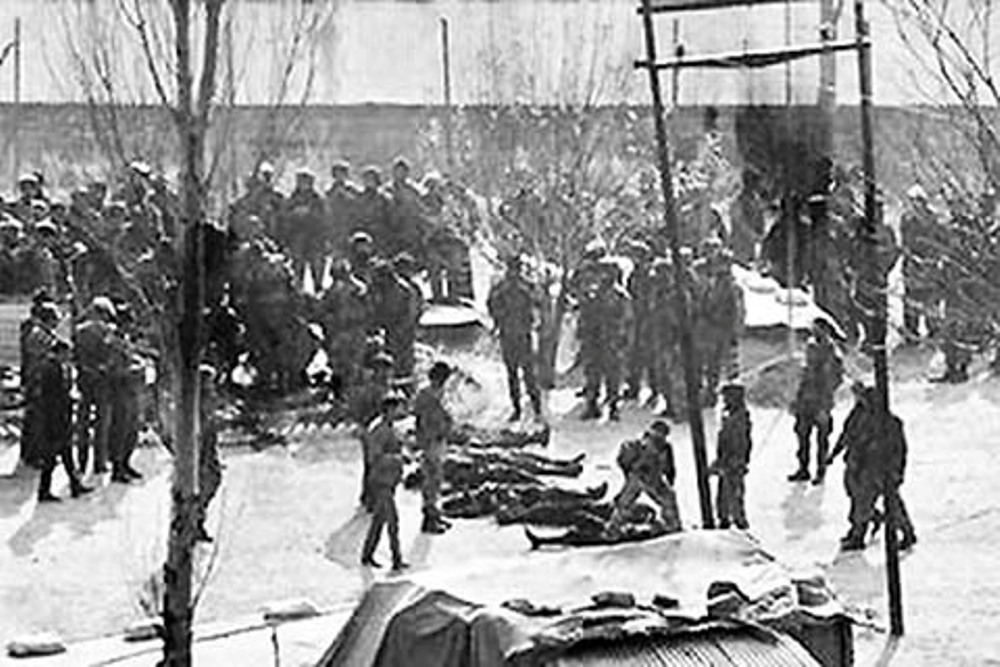
The emergence of the army watchtower, post the January 25 massacre of 1990, from the park that once housed a fountain, a fish pond, a walnut and an apricot tree, changed Handwara forever.
The yesteryear’s leisurely strolls became the tales of ‘good old days’ amid peaked militarisation in the town. Even the town’s own, late Abdul Gani Lone, who used to sit and talk to people inside it, couldn’t maintain its status quo.
The military bunker was now calling the shots at will.
People would fall in line. And the army pickup trucks taking them for bonded labour—the modern day begair—in many garrisons around, would make sure that they would. It reminded the elders of the Dogra regime’s harsh practice of sending Kashmiris to Gilgit’s treacherous terrains of ‘no-return’.
By the fall of 1990, the bunker oversaw another carnage, when the 13 Kumaon Soldiers of the Indian Armed Forces killed 22 civilians, burnt down three dozen houses, and over 200 shops. Among the slain was a National Conference Member of the Legislative Council, Ghulam Rasool Malik—shot dead, after being dragged out of his house. Even after 28 years since the incident, there is no headway in the case ‘investigation’.
But what was merely a sand picket then, became concertized after the legendary Akbar Bhai of Afghan descent mounted an attack on it in summer 1993.
No sooner did that happen, were the towns-people seen ferrying construction material for its re-construction from the abandoned Pandit houses, being forced to work as bonded labourers once again. Later, the bunker would oversee the passage of military convoys, rumbling down the northern towns, where the war was still in its thickest.
“As it became a new enforcer in the town,” says Er Rasheed, a legislator, and one of the men forced for the begair those days, “the simpletons became suspects, and were taken inside either to come out doomed, or dead.”
Subhan Goor was one such dead man. One day in the nineties, as a grenade was lobbed at the bunker, Goor was taken inside. Only his dead body came out. Another time, when another grenade attack rocked the town, an army major barged into a local tailor’s shop to kill two tailors—“who would regularly greet him”—in cold-blood.
As the town was still coming to terms with the frequent insurgent strikes, many passersby became ‘collateral damage’ in the combat. On the “big occasions”—January 26 and August 15—the bunker would serve as a literal tricolour parade centre. A pack of dogs, and deathly whistles emanating from the bunker, had become a regular thing. Many in the town tried to strike some semblance with the bunker regime, to avoid the wrath.
A major shift took place when Sajad Lone’s 2002 proxy candidate from Handwara, Mohiuddin Sofi reportedly contributed Rs 13 lakh from his Constituency Development Fund (CDF) for the bunker construction. The locals say that the amount was Sofi’s way of reciprocating the gesture to the commander “who had helped him to win the election”. The bunker was now a hi-tech gizmo watch — an apparent surveillance structure right in the middle of the town.
But the square finally attained its status quo in April 2016, when a schoolgirl was molested by an army man. In the rage that followed the event, five lives were consumed. Among them was Nayeem Bhat, a promising cricketer, shot in his abdomen after protests broke out in the town. He was killed along with Pir Iqbal, a salesman in the town. The two killings subsequently led to series of protests in the belt, leaving three more people dead.
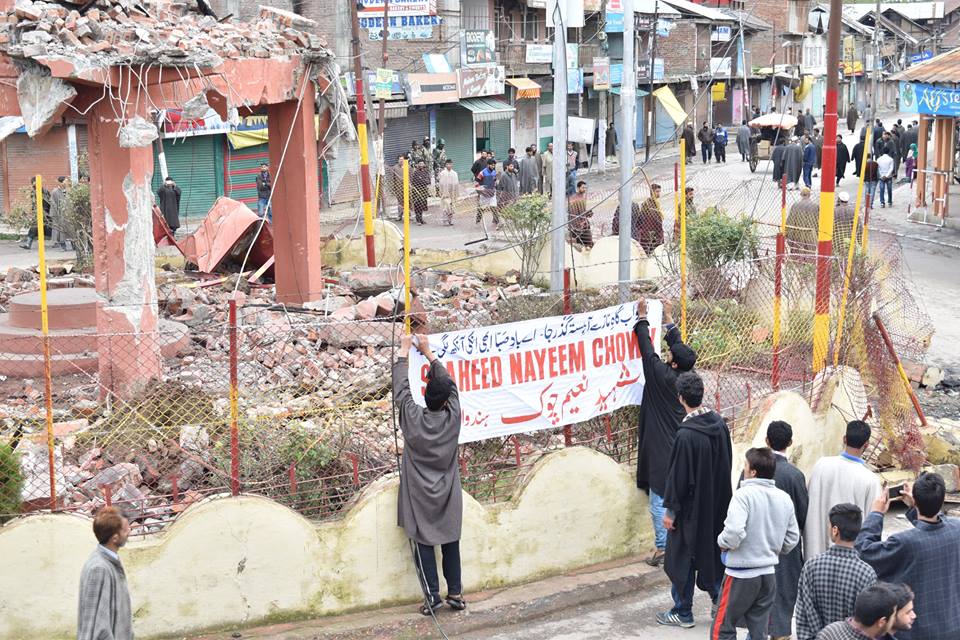
The killings reminded many of January 25, 1990 massacre when the Border Security Force of the Indian Armed Forces jumped from their 407- TATA vehicle with Light Machine Guns mounted at the top, killing 25 civilians.
The protesters torched the watchtower before the “desperate for maintaining calm” authorities ran a bulldozer to the spot to decimate it.
In spring of 2016, the memorial—denied in January 1990—got erected at the square, from the wreckage of the watchtower, with a new identity: Shaheed Nayeem Chowk.
Published in FreePressKashmir.Com on 25-Jan-2018

